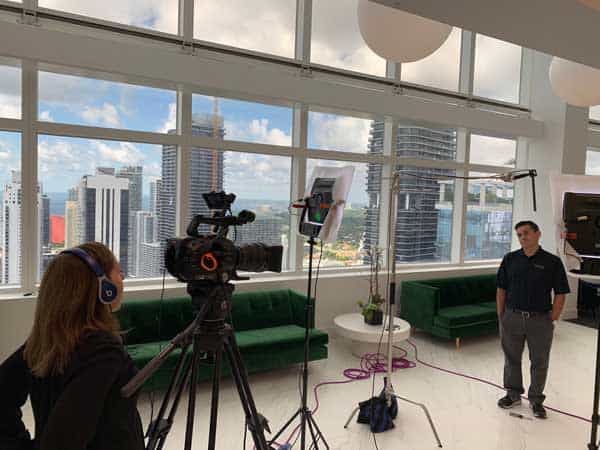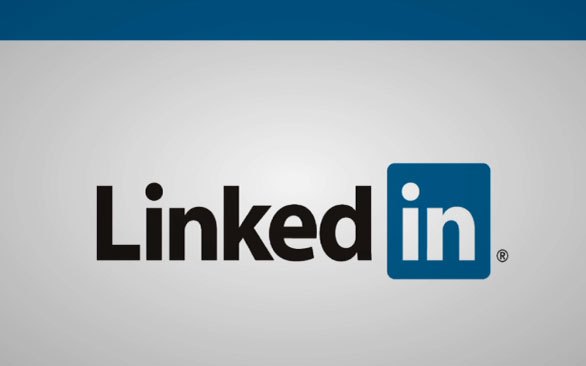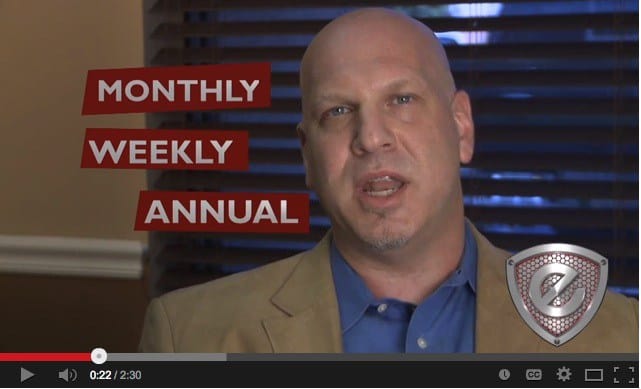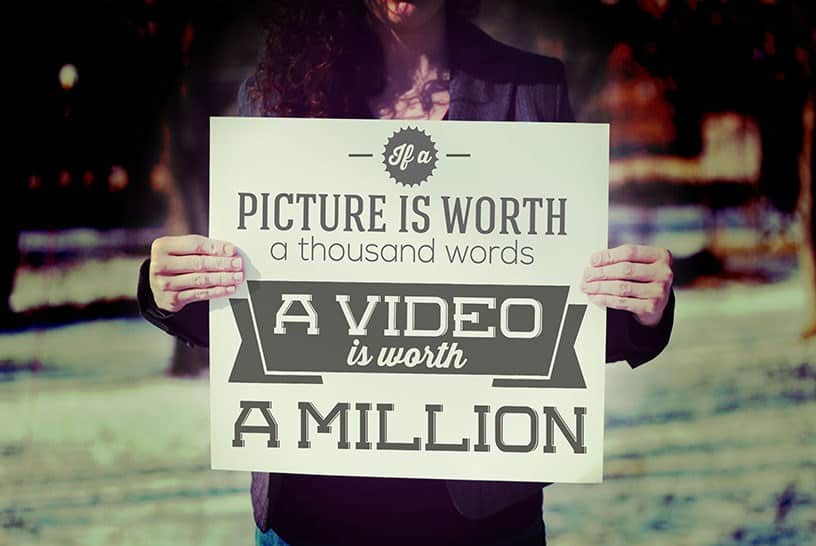When a company wants to create video content, there’s more to it than, “Hey, let’s create a video about our business!” A lot of planning and strategy should go into the process. What are the goals for the video? Who will be in it? What is the purpose of creating this video? Are you trying to increase sales? Trying to improve the corporate image? Trying to attract new employees or executive? …and so much more.
Many marketers are using high quality video to improve rankings on Google, provide site visitors information that differentiates them from their competitors, or answer questions to increase authority. Some are shrewdly thinking about how they can turn what the company does into content or how to place the video in the right places to get views and conversions into sales.
Planning a corporate video has many components and depends on what you’re shooting, where you’re shooting, and variables that impact the finished video. Most of the plan should be completed in the pre production portion of the project. During the pre production, you’ll work on the creative portions: the script, the visuals, the shot list, the talent, the location, and a few other minor elements.
Here are a couple of simple things you can do to plan for your corporate video production:
1. Clarify the Goals of the Video
Before you ever create a call sheet, why are you creating this video? Are you using it to become an influencer? Educate others on a topic? Improve the brand image? While you create this list of reasons, think about who wants this information and how it will reach them. What will you do to measure the success of this video? Calls? Requests? Views? This is also where you consider if the video aligns with your marketing strategies and is what your target audience is looking for.
2. Time Content Delivery with Key Dates
When you deliver (post or show) this video, how will it relate to any key or pertinent dates related to the business? For example, do sales usually dip during a certain time of the year? Are certain products or services on sale on a specific date? Plan to post the video with appropriate key dates in mind. Layer on top the timeline to complete the video project (make sure you have sufficient time to complete the shoot and edit prior to beginning the project). Key events could be an annual event, marketing campaigns, product launches, etc.
3. Where and How Will You Share the Video?
You’ve set your goals, now where will you post or use the video? Where does it make sense? Some of our clients will use it on a product end cap in a retail store or on the Amazon product page to increase conversion. Where it is placed is just as important is the overall objective of the video. Several options of where you could place it is: website, landing page, email campaign, Vimeo/YouTube, Social Media pages like Facebook, Instagram, or LinkedIn, television (broadcast, cable), and several others. The nice part is you can place video at all, some, or one of these platforms. When considering where to place the video, you’ll want to identify what conversion rates look like and how many and who is actually watching your video. You want to create content that your customers want, including the types of content needed to convert.
4. Create a Budget (or a range)
You should determine what is the appropriate amount you’d like to invest in creating a video. Sometimes what you want to do or what the script says will determine the budget, but you should have an idea. Some people come to us with very high or very low numbers, and while you can always find someone to do what you need at any number, we recommend finding someone who can do what you need near the budget you’d like to spend without sacrificing quality and know-how to craft your message successfully. One time we saw a potential client hire a freelancer, single-person production company only to find out that half of what they wanted in the video could not be done because they didn’t have the equipment or know-how to get the job done. We were grateful they called us back to take care of their project.
5. Use Brand Guidelines
Whether you own a small business or are part of a large national or international organization, keep your identity on brand. It’s critical to keep the look, feel, and sound of your business in check with your all areas of marketing. When a potential client or customer thinks of your brand, what image is sparked in his or her mind? What do you stand for? What differentiates you from competitors? How would one describe your brand? By creating a list of qualities related to your brand, you can use this to steer your creative approach and final messaging. Because your video script should be evergreen, you must clearly identify qualities and traits that describe your brand and use them in your messaging.
While there is more to it than that, these are five critical components for crafting and creating a successful corporate video to incorporate into your video marketing campaign. When everything ties together a magical result can, and usually does, occur. Plan your message to match your brand and while creating the types of video your audience wants and you’ll find a much more successful outcome to your video project.

















